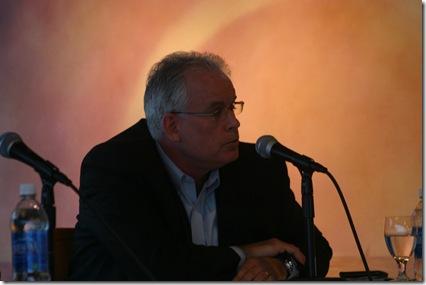T-Mobile Expands HSPA+ Network, Says Failed AT&T Deal “Paved Way” For LTE
T-Mobile USA CTO Neville Ray just announced the expansion of T-Mobile’s HSPA+ network via a company blog post. T-Mobile’s 4G network will be available in Abilene, Amarillo, Odessa, and Victoria, Tex; Bakersfield, CA; Eau Claire, Wis.; Joplin and St. Joseph, MO. Additionally, customers in Abilene, Amarillo, Bakersfield, Odessa, Port St. Lucie, and Victoria can experience the faster speeds offered by T-Mobile’s HSPA+ 42 network with devices such as the recently announced Samsung Galaxy S Blaze 4G and the HTC One S coming soon to T-Mobile.
T-Mobile’s 4G network now reaches well over 200 million people in 225 markets, allowing T-Mobile to continue their claim of America’s Largest 4G network.
Ray also announced that it was in fact the acquired spectrum from the failed AT&T deal that will allow T-Mobile to deploy LTE in 2013. When asked about the company’s claim for “no clear path to LTE” during the AT&T talks, Ray responded by saying “…Most importantly, we’re getting new AWS spectrum as a result of the termination of the AT&T deal (pending regulatory approval), which we will use for LTE.”
Read the full post below including the very last question regarding the 1900MHz refarming:
Q&A with Neville Ray, Chief Technology Officer of T-Mobile
T-Mobile USA recently announced it will invest $4 billion over time to modernize our network and launch LTE services in 2013. T-Mobile’s CTO, Neville Ray, took a moment to answer some questions about this network transformation effort, and share the latest T-Mobile 4G expansion news.
What is the status of T-Mobile’s 4G network today?
T-Mobile was the first carrier to offer a nationwide 4G network based on HSPA+ technology, and we continue to expand 4G services into new markets with faster speeds. In fact today, we’re happy to announce the launch of 4G in Abilene, Amarillo, Odessa, and Victoria, Tex; Bakersfield, CA; Eau Claire, Wis.; Joplin and St. Joseph, MO.
Customers in Abilene, Amarillo, Bakersfield, Odessa, Port St. Lucie, and Victoria can experience the faster speeds offered by our HSPA+ 42 network with devices such as the recently announced Samsung Galaxy S® Blaze™ 4G and the HTC One™ S coming soon to T-Mobile.
T-Mobile currently operates America’s Largest 4G Network, reaching well over 200 million people in 225 markets.
Will you evolve the current 4G network to HSPA+ 84?
The evolution of HSPA+ is still an opportunity for us and offering HSPA+ 84 (84Mbps theoretical download speeds) is something we’ll continue to evaluate because the capability is there in the network. That said, our priority now is preparing our network for LTE in 2013. But, in the long run, I would like to see both technologies advance.
Are you concerned about the timing of T-Mobile’s LTE deployment? Are you late?
Not at all. As we roll out LTE in 2013, we have the advantage of coming to market at a time when the price points on LTE devices and network infrastructure will be coming down and the performance of LTE devices and network infrastructure will be improving. We plan to deploy LTE release 10 compatible equipment, so we’ll be well-positioned and ready to move to LTE Advanced.
During the proposed AT&T T-Mobile USA merger the company said that it had “no clear path to LTE.” What changed?
Several important developments make LTE possible for us now. Most importantly, we’re getting new AWS spectrum as a result of the termination of the AT&T deal (pending regulatory approval), which we will use for LTE.
We are also going to make more effective use of the spectrum we already have by refarming a portion of our 1900 MHz PCS spectrum to support HSPA+ services, which frees up additional AWS spectrum for LTE. With the AT&T breakup spectrum factored in, T-Mobile will have sufficient spectrum to roll out LTE with 20MHz to about 75% of the top 25 markets in 2013. Most remaining markets will have 10MHz. Our course, we’d love to have more spectrum to further strengthen our position to compete in the marketplace.
Will refarming make your network compatible with the iPhone? And will you stop offering 2G services?
A nice side benefit of the refarming effort is that our 4G network will be compatible with a broader range of devices, including the iPhone. The other important benefit of our network modernization effort is the coverage improvements it will deliver, especially when it comes to in-home coverage.
As we refarm our 1900 spectrum, we will continue to fully support our customers with 2G devices.

